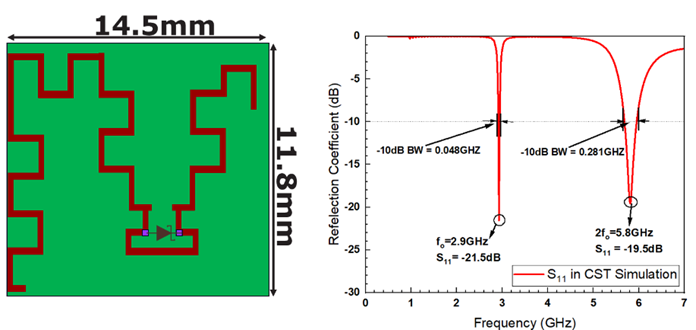Theme: | Sensing/Antenna Design |
Application: | Biodiversity and biosecurity |
Contact Person: | |
External collabolator: | |
Intorduction: | Harmonic radar systems have been successfully used to detect and track small passive harmonic tags in a variety of applications. One of the common use case is tracking of tags carried by insects flying at low altitudes as is schematically illustrated in the figure below. The main operating principle in nonlinear radar is that the target of interest is nonlinear so that it produces a return signal at a frequency different of that of the illuminating signal. This allows efficient clutter reflection but introduces a number of unique challenges in the system design.
|
Description: | In the Radio Systems group we have designed a prototype tag using meander line topology. This tag is optimised to receive radiated signal from the transmitter at fundamental frequency 2.9GHz and re-radiate the tag at second harmonic frequency 5.8GHz. It has a compact size of 14.5x 11.8 mm2.
With first success in testing, there remains a number of challenges to be addressed in future research such as
Multiple projects are available on this topic. |
Requirements: |
|
Additional Info |


